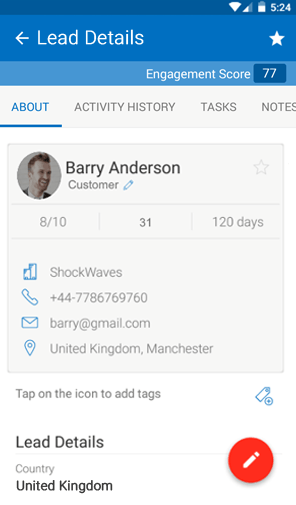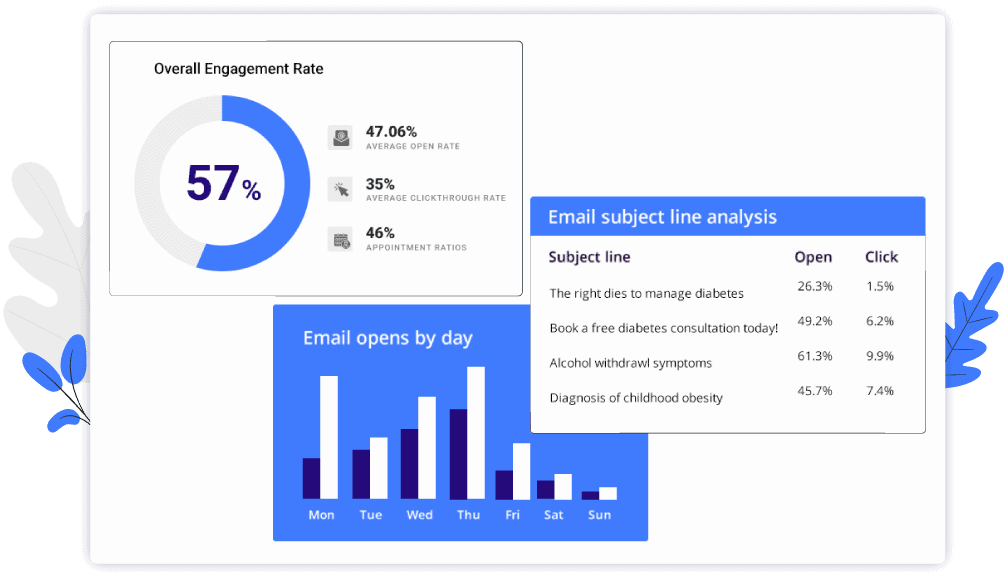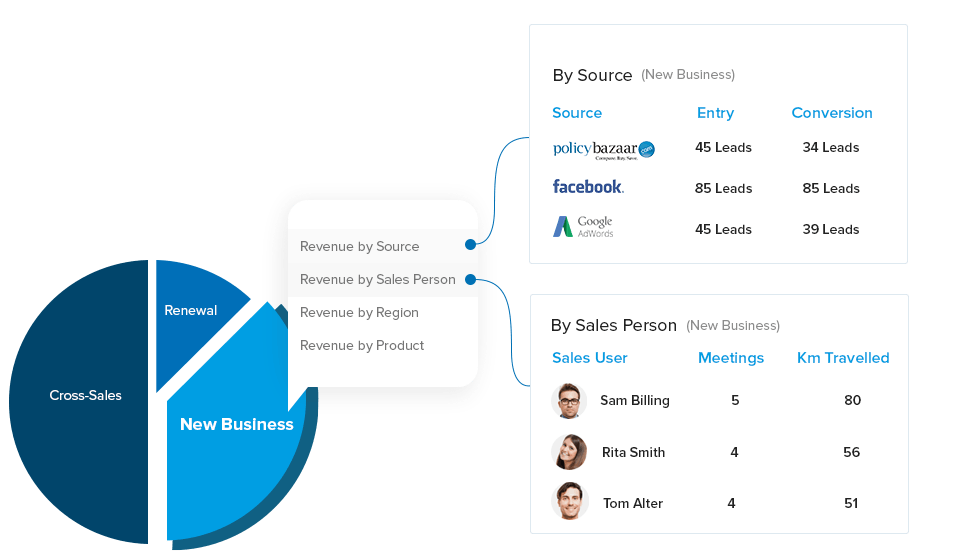In today’s consumer-focused milieu, customers expect brands to understand their needs more than ever. CRM platforms do not just manage customer contact information but also record how customers interact with them across various channels. 86% of the senior-level marketers agree that it is necessary to create a cohesive customer journey across all these channels. The success of a business now depends on how effectively it can interpret this data.
Advances in machine learning and artificial intelligence have enabled businesses to gain traction rapidly. A notable example is how AI and ML applications are integrated into CRMs to improve sales and marketing outcomes. Modern CRM platforms do not only collect data but also help businesses interpret them. As a business owner, you must have a CRM strategy to use your customer insights more effectively.
Read on to learn how you can create an effective data-driven strategy using CRM.
1. Delve deeper into the data
When you have a CRM solution implemented in your business, you already have numerous metrics in place. Most of the CRM tools will provide insights to develop a data-driven strategy. Here are some of the key metrics that you must look at to build up your CRM strategy.
Count the responses
Start with the reports of your last few campaigns. From there, look at the top fifty responses. Your marketing campaign may have reached ten thousand people. Suppose out of those ten thousand, two hundred responded, and fifty people finally became your customers.
Gloss over those fifty responses, and you’ll have all the answers you need to define your customer profile.

Focus on the top responses
Now, look at the data that you have not noticed before. Most good CRMs provide you with these additional metrics where you can see:
- how many times a customer opened an email before clicking the link, or
- how many pages they have browsed before purchasing the product.
You need not do number crunching here to discover a pattern in the data. What most people overlook is the report from previous marketing campaigns.
Analyze the patterns in the data
You will find clusters in the data of your top respondents. Maybe you will see that they have opened the email between 8 AM and 10 AM. Then later in the day, they clicked the link and browsed the product. The next day, they made the purchase.
Look across data over multiple campaigns, and you may find that your target audience is more responsive in the morning and at the end of the day.
You can also look at the clickthrough rates and check if opens cost you more than clickthrough. Did a lot of people open the mail but did not click on the links? That means your marketing campaign did not grab the attention immediately. Maybe they clicked the link, visited your website, but did not do anything. Or maybe, they opened the email multiple times and did not click at all. Information like this can be beneficial to both sales and marketing departments. The sales team can get in touch with your prospects to lead them through the journey, and the marketing team can plan better campaigns for the future.

Remember the discoveries
As you sift through the data collected by the CRM, you will find multiple weak spots in your marketing campaigns. You will come across numerous derivative metrics which can help you improve response rates and boost sales. Often, these metrics are not directly associated with your data but are spread across the data.
These insights will grant you more information regarding who your target audience is, what their purchasing habits are, and more. It is the first step towards making your data-driven strategy using CRM.
2. Pay attention to the surrounding data
Your marketing emails are not the only reason behind your sale numbers. If you are using your CRM platform wisely, you will have a record of every email, phone conversation, and interaction over social media. When you look at your top respondents, you can easily find the blueprint of a successful sale right under one roof.
Qualitative data is crucial.
When you use a CRM to see how well your business is performing, you will look at the KPIs. However, you need to understand that often, a lot of unstructured data can reveal a lot about your business performance.
When we say Big Data, we usually refer to unstructured datasets, such as notes regarding sales, conversations with a customer, and so on. This data can reveal how customers interact with your sales team, the performance of your sales team, and what can be an effective strategy to boost sales.
All the data you need is right there in your CRM platform.
The quantitative metrics come from qualitative data.
Qualitative data directly influences the metrics. For instance, you may find that the conversion rate dropped after you changed the design of your website. The website design may not come up in the CRM as a metric, but you may see that visitors are struggling with navigation.
Once you find bottlenecks like this, you can fix them.
Create feedback forms or surveys
Good CRM platforms can quantify unstructured data by creating custom metrics. You can create feedback forms or ask the customer to participate in surveys. The same negative comment from multiple customers can reveal a deeper issue with your business. You can use CRM to look up the interactions of these customers with your brand to understand the underlying issue.
3. Use predictive analytics
CRMs do not just give you a view of the past but also forecast the future. From the record, you may have seen an issue like low conversion rates because of complex website navigation, or a lack of a clear CTA, or maybe badly timed emails. Customer feedback can also reveal a variety of issues that you may not have thought about before.
CRMs with predictive analysis give you a view of what lies ahead. While you do not need to know the nitty-gritty of statistics, or regression analysis, having some knowledge will help. Most CRMs now come with verbose data visualization and prediction tools that allow you to see how X leads to Y.
CRM tools are also good at predictions. For example, if you have your email timings from the last few campaigns and the conversion rates for each campaign, your CRM can tell you when you need to send out your next email campaign to maximize your conversion rates. The prediction capability improves as the volume of data increases.

4. Personalize
Personalization has been integral to marketing. However, now, customers have much higher expectations. Knowing their names isn’t enough. Customers expect brands to know their preferences as well. Therefore, you need to integrate your “surrounding data” into your CRM.
For example, you can use data from your customer’s social media profile to personalize your marketing campaign. Surprisingly, only 19% of marketers use birthday campaigns. You can see their tweets, public posts, and comments to understand their interests and cater to them better.
Social Media lets you see customers as people.
By integrating social media and CRM, you can record and aggregate information about your customers continuously. Even if you do not do business, observing your customers’ behavior can help you segment them and develop communications for each interest group. You can be more personal and friendly with your customers as you now know them better.
Create your target personas
You will find that many customers share similar interests, they also behave similarly. Based on demographics and psychographics, you can segment customers and target marketing campaigns accordingly.
5. Plan your marketing campaign
The final step of your data-driven strategy using CRM is to plan your next campaign.
Your new CRM strategy will let you make customer interactions more meaningful. You will find some derivative metrics, use predictive analytics to judge the response rate of your campaigns, and use social media data to personalize content.
Data-driven strategies do not only involve finding new insights but also cleverly implementing them. It gives you more place to stand, provides better support, and makes more creative campaigns.
I hope this article helps you understand the importance of CRM and utilize the data you already have.
If you’re looking for a CRM to get more insights into your customers and prospects or unable to derive meaningful insights from your existing CRM, check out LeadSquared. You can also try it for free.









